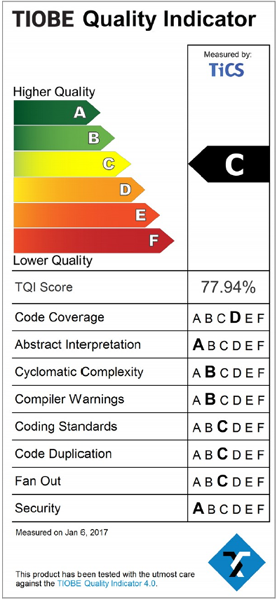

We Measure Your Software Code Quality:
TIOBE checks more than 1056 million lines of software code for its customers world-wide, real-time, each day.
- Based on the ISO 25010 standard about software quality
- Measuring 350 standardized aspects automatically
- Result is a score between 100 (level A) and 0 (level F)
- Methodology is called TIOBE Quality Indicator
Supporting over 200 programming languages and many Linux distributions, WhiteSource ensures the accurate detection of all open source components in your products.

TIOBE Quality Indicator:
The 8 code quality metrics defined in this article all help to get a complete picture of the code quality before release. However, not all code quality metrics are equally important. For instance, a low code coverage has much more impact on quality than a high fan out rate. This section defines how the 8 metrics are combined into one overall code quality figure, called the TIOBE Quality Indicator (TQI).
The metrics are combined by weighing them. This is based on empirical evidence. It is important to note that TIOBE has started research to correlate software defects to code quality metrics for the more than 1 billion lines of code it measures each day. Once this research has been finished, the weighing will be more solidly founded on statistical data.
The TIOBE Quality Indicator (TQI) is a pragmatic way to get an overview of the quality of software code before release or even before system testing. The indicator combines the most well-known code quality metrics by defining how they are measured and how the outcome of the resulting measurements should be judged. Based on this a software system is labelled between A (outstanding quality) and F (poor quality).


